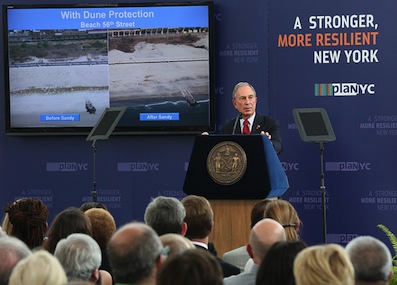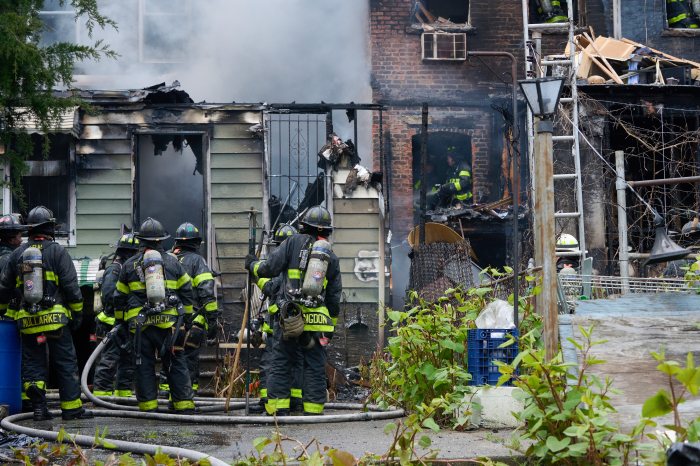Sandy not only showed New York’s City vulnerability to powerful storms; the superstorm also highlighted the future impact climate change could have.
Mayor Michael Bloomberg released the results of a 430-page report on Tuesday examining that very issue. The report contains 250 recommendations on how the city can further protect its neighborhoods and infrastructure against climate events.
“We’ve done a lot to attack the causes of climate change and make our city less vulnerable to its possible effects,” Bloomberg said during his announcement of the report, entitled “A Stronger, More Resilient New York.”
“But Sandy – which tragically took the lives of 43 New Yorkers — made it all too clear that, no matter how far we’ve come, we still face real, immediate threats,” he continued.
The report assesses weather-related threats such as hurricanes, droughts, heavy downpours and heat waves as well as rising sea levels that could result from climate change.
To mitigate the damage from such phenomena, the report makes recommendations for coastal protections. Several are specific to Queens.
Proposals for the borough include studying future surge barriers for Jamaica Bay, installing a dune system on the Rockaway Peninsula, setting up a storm surge barrier at Newtown Creek with gates and connecting levees and installing and raising bulkheads to protect the shoreline in south Queens.
The report also makes recommendations on flood resistant measures for buildings. Those include $1.2 billion in loans or grants for owners to reinforce their structures.
Further, the report calls for reducing flood insurance rates for homeowners through methods other than elevating people’s homes, and for creating more insurance price options.
Beyond flooding, the report looks at ways to strengthen the city’s healthcare system. Methods include making sure facilities are prepared to handle patients’ needs as well as power, telecommunications and other critical systems during disasters.
To read the full report, click here.
RECOMMENDED STORIES


































